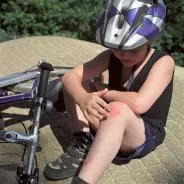Preventive measures play a crucial role in managing knee deformities.
Knee Deformities in Children
 Knee deformities in children can significantly impact their quality of life, influencing mobility, self-esteem, and overall well-being. This webpage aims to provide a comprehensive exploration of knee deformities, elucidating the reasons behind their occurrence and the profound effects on a child’s life. Furthermore, we will delve into risk factors, potential complications, non-surgical and surgical treatment options, preventive measures, and the long-term benefits of managing knee deformities. Additionally, we will discuss why the Medical City Children’s Orthopedics and Spine Specialists, home to renowned physicians Doctors Shyam Kishan, Richard Hostin, and Kathryn Wiesman, is a premier choice for those seeking specialized care.
Knee deformities in children can significantly impact their quality of life, influencing mobility, self-esteem, and overall well-being. This webpage aims to provide a comprehensive exploration of knee deformities, elucidating the reasons behind their occurrence and the profound effects on a child’s life. Furthermore, we will delve into risk factors, potential complications, non-surgical and surgical treatment options, preventive measures, and the long-term benefits of managing knee deformities. Additionally, we will discuss why the Medical City Children’s Orthopedics and Spine Specialists, home to renowned physicians Doctors Shyam Kishan, Richard Hostin, and Kathryn Wiesman, is a premier choice for those seeking specialized care.
Understanding Knee Deformities:
Knee deformities in children encompass a range of conditions that affect the alignment, structure, and function of the knees. Also, these deformities may manifest as bowlegs (genu varum) or knock-knees (genu valgum), disrupting the natural alignment of the lower limbs. The reasons behind these deformities can be multifactorial. For instance, they involve genetic factors, developmental issues, nutritional deficiencies, or underlying medical conditions.
Impact on a Child’s Quality of Life:
Knee deformities can exert a profound impact on a child’s quality of life, influencing physical and emotional well-being. Impaired mobility may hinder participation in sports and activities, affecting the child’s social interactions and self-confidence. In addition, the visible nature of deformities may contribute to feelings of self-consciousness, emphasizing the importance of timely diagnosis and intervention to mitigate these challenges.
Risk Factors Leading to Knee Deformities:
Several risk factors contribute to the development of knee deformities in children. Genetic predisposition, nutritional deficiencies, and certain medical conditions during growth spurts can increase the likelihood of deformities. Nevertheless, environmental factors, such as improper footwear or poor posture, may also play a role. In all cases, it is important to identify and address these risk factors early on for effective prevention and intervention.
Complications Arising from Knee Deformities:
Left untreated, knee deformities can lead to various complications affecting a child’s physical health. To summarize, muscular imbalances, joint pain, and uneven stress distribution on the knees are common complications. Unfortunately, these issues can exacerbate over time, potentially leading to chronic pain, joint damage, and limitations in daily activities. Therefore, timely intervention is crucial to prevent the progression of complications.
Non-Surgical Treatment Options:
Non-surgical interventions form the cornerstone of managing knee deformities in children. At the same time, physical therapy plays a vital role in addressing muscular imbalances, improving joint stability, and promoting proper alignment. Additionally, orthotic devices, such as braces or shoe inserts, may be recommended to support optimal lower limb alignment. Thus, regular monitoring and lifestyle modifications are essential components of non-surgical treatment plans.
Surgical Treatment for Severe Cases:
In cases where non-surgical interventions are insufficient, surgical treatment may be considered, especially for severe or progressive knee deformities. To this end, surgical options may include osteotomies (bone realignment procedures) or guided growth techniques to correct the alignment gradually. Regardless, surgical interventions are tailored to the specific needs of the child, aiming to restore proper knee alignment and function.
Preventive Measures and Early Intervention:
Preventive measures play a crucial role in managing knee deformities. Therefore, ensuring proper nutrition, promoting healthy growth and development, and encouraging regular exercise are fundamental preventive actions. In conclusion, early intervention at the first signs of deformities is key to preventing complications. Finally, routine pediatric check-ups and monitoring of growth milestones contribute to the early detection of potential issues.
Long-Term Benefits of Comprehensive Care:
Comprehensive care for knee deformities yields long-term benefits for a child’s health and well-being. Effective management, whether through non-surgical or surgical interventions, aims for lasting symptom relief, improved mobility, and enhanced overall quality of life. Regular follow-up care and monitoring contribute to the sustained success of the treatment plan, ensuring that the child continues to thrive into adolescence and adulthood.
Choosing the Medical City Children’s Orthopedics and Spine Specialists:
For those seeking specialized care for knee deformities in children, the Medical City Children’s Orthopedics and Spine Specialists stands as a distinguished choice. Led by the expertise of Dr. Richard A. Hostin, and doctors Shyamn Kishan, and Kathryn Wiesman the practice prioritizes a patient-centered approach, offering individualized care plans tailored to each child’s unique condition and needs. State-of-the-art technology, a multidisciplinary team, and a commitment to advancing pediatric orthopedic care solidify the practice as a premier destination for families seeking the best in knee deformity management. The team’s collective experience and track record of successful outcomes make the Medical City Children’s Orthopedics and Spine Specialists a trusted partner in the journey toward optimal knee health for children. The doctors have offices in Arlington, Dallas, Flower Mound, Frisco, and McKinney, TX.
____________________

Recent Comments